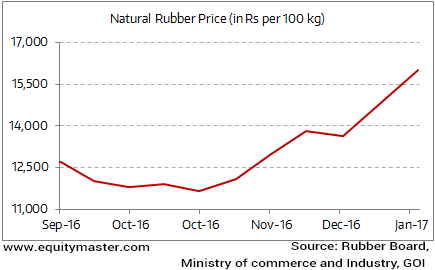India's Third Giant Leap
This Could be One of the Biggest Opportunities for Investors
- Home
- Todays Market
- Indian Stock Market News February 14, 2017
Indian Indices Trade Near the Dotted Line; Metal Stocks Witness Selling Tue, 14 Feb 11:30 am
After opening the day on a flat note, the Indian share markets witnessed choppy trades and continued to trade near the dotted line. Sectoral indices are trading on a negative note with stocks in the metal sector and consumer durables sector witnessing maximum selling pressure.
The BSE Sensex is trading down 8 points (down 0.03%) and the NSE Nifty is trading down 9 points (down 0.1%). The BSE Mid Cap index is trading down by 0.6%, while the BSE Small Cap index is trading down by 0.3%. The rupee is trading at 66.90 to the US$.
Recent data released showed retail inflation moderated to 3.17% in January. This was noted as the lowest since India started putting out consumer inflation numbers in January 2012. The decline was led by a marked fall in food inflation.
However, the closely watched core inflation rose further. This suggested that a decline in inflation is not likely to fetch a rate cut.
The Reserve Bank of India (RBI) last week decided not to cut interest rates while changing its monetary policy stance to 'neutral' from 'accommodative' in keeping with the 4% medium term inflation target. The RBI now projects inflation to be in the range of 4% to 4.5% for the first half of next financial year, and in the range of 4.5% to 5% in the second half.
We believe that India needs more of structural reforms rather than temporary measures such as monetary stimulus. Low inflation target for some years ahead will surely give the assurance of wellbeing. However, without structural changes, it also raises doubts regarding its longevity in the long run.
In another news, tyre manufacturers could be at the losing end of Trump's tariff threat on tyres from China. If the tariff gets implemented, one can expect dumping of tyres from Chinese manufacturers to countries other than the US. This could also mean a simultaneous surge in imports of Chinese tyres in India.
This coupled with the rise in natural rubber prices will mean pressure on margins for tyre companies.
One shall note that natural rubber price rose to a two-and-a-half-year high in January 2017. This was due to both demand and supply. Demand in China - the world's largest consumer - is robust. And there has been a disruption in supply from Thailand - the top producer of the commodity - because of flooding in the south, Thailand's major rubber-growing region. Synthetic rubber, another raw material used in tyre manufacturing, is also more expensive thanks to rising crude oil prices. All of these factors have led to a rise in rubber prices of late.
Rubber Prices Going North

For information on how to pick stocks that have the potential to deliver big returns, download our special report now!
Read the latest Market Commentary


Equitymaster requests your view! Post a comment on "Indian Indices Trade Near the Dotted Line; Metal Stocks Witness Selling". Click here!
Comments are moderated by Equitymaster, in accordance with the Terms of Use, and may not appear
on this article until they have been reviewed and deemed appropriate for posting.
In the meantime, you may want to share this article with your friends!